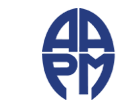| Question 1: The main purpose of reporting a medical event is? |
| Reference: | Eric C. Ford, Koren Smith, Kendra Harris, Stephanie Terezakis. (2012) Prevention of a wrong-location misadministration through the use of an intradepartmental incident learning system. Medical Physics 39:11, 6968-6971.
|
| Choice A: | For regulatory purpose. |
| Choice B: | Asking for troubles. |
| Choice C: | Institution requirement. |
| Choice D: | FDA requirement. |
| Choice E: | Improve patients’ safety. |
| Question 2: Upon receipt of seeds order and prior to implant, you discover one leaking source... |
| Reference: | Reference: https://www.nrc.gov and state regulations
Speaker 2: Susan Richardson, Ph.D.
Presentation Title: The physics predicament of efficiency vs efficacy
Questions set 1:
|
| Choice A: | Remove the source and send it back to manufacturer. |
| Choice B: | Remove the source and store it for decay. |
| Choice C: | Send the whole package back to the manufacturer. |
| Choice D: | Report it to the manufacturer and your regulators and follow their guidance. |
| Question 3: According to the NCI, quality assurance for clinical trials should be tailored according to?
|
| Reference: | Bekelman, Justin E., et al. "Redesigning radiotherapy quality assurance: opportunities to develop an efficient, evidence-based system to support clinical trials—report of the National Cancer Institute Work Group on Radiotherapy Quality Assurance." International Journal of Radiation Oncology* Biology* Physics 83.3 (2012): 782-790.
|
| Choice A: | The number of patients in the trial. |
| Choice B: | The trial clinical objectives. |
| Choice C: | How timely the QA can be performed. |
| Choice D: | How fast patients are accrued on trial. |
| Question 4: The purpose of the Task Group 100 report on risk analysis methods for quality management is to?
|
| Reference: | Huq, M. Saiful, et al. "The report of Task Group 100 of the AAPM: Application of risk analysis methods to radiation therapy quality management." Medical Physics 43.7 (2016): 4209-4262.
Speaker 3: Timothy Showalter, M.D.
Presentation Title: Physician perspective on improving safety by learning from mistakes
|
| Choice A: | Allow physicists to decide what QA tasks they do and don’t perform. |
| Choice B: | Show how we do too much IMRT QA. |
| Choice C: | Provide a methodology for analyzing clinical processes and developing site-specific QM programs. |
| Choice D: | Display a guideline for physicists to implement into their own clinic. |
| Question 5: The Agency for Healthcare Research and Quality (AHRQ) provides guidance on essential elements of a “culture of safety” in healthcare. Which of these factors is considered a key feature of a “culture of safety”?
|
| Reference: | The Agency for Healthcare Research & Quality (AHRQ) Patient Safety Network’s Patient Safety Primer, available on the web (https://psnet.ahrq.gov/primers/primer/5/safety-culture).
|
| Choice A: | Remembering that health care organizations are involved in low-risk activities. |
| Choice B: | Resources and commitment to detailed investigations of errors with the goal of assigning blame to the correct personnel. |
| Choice C: | Encouragement of collaboration across ranks and disciplines to seek solutions to patient safety problems. |
| Choice D: | Expectation that safety programs will not require any institutional commitment of resources to address safety concerns. |
| Question 6: Among 33 HDR brachytherapy medical events reported to the Nuclear Regulatory Commission during 2009-2010, which category was the most common type of medical event?
|
| Reference: | Richardson S. A 2-year review of recent Nuclear Regulatory Commission events: What occurs in the modern brachytherapy era? Practical Radiat Oncol 2012;2(3):157-163. |
| Choice A: | Wrong site. |
| Choice B: | Wrong dose. |
| Choice C: | Unintended exposure. |
| Choice D: | Other. |
